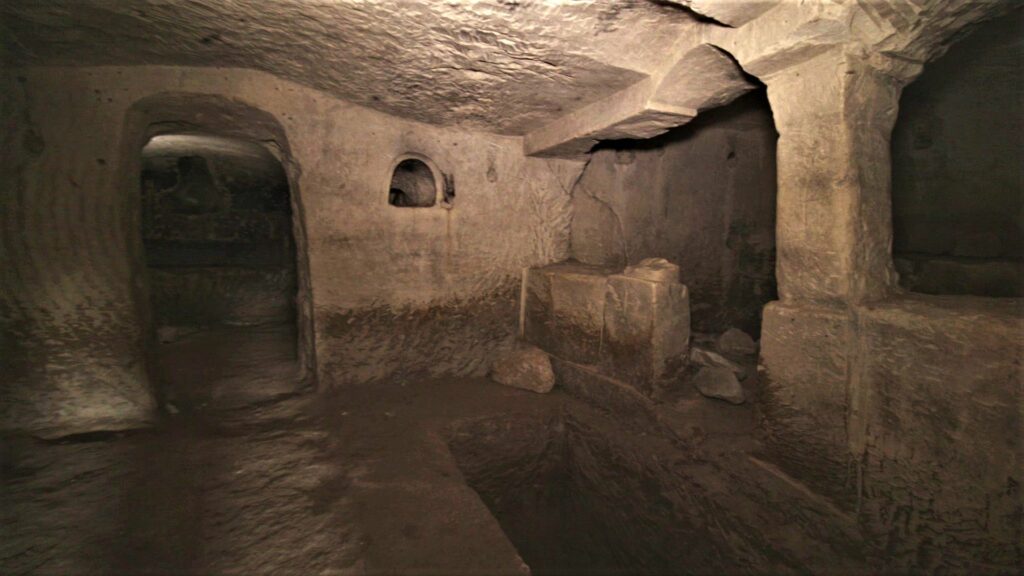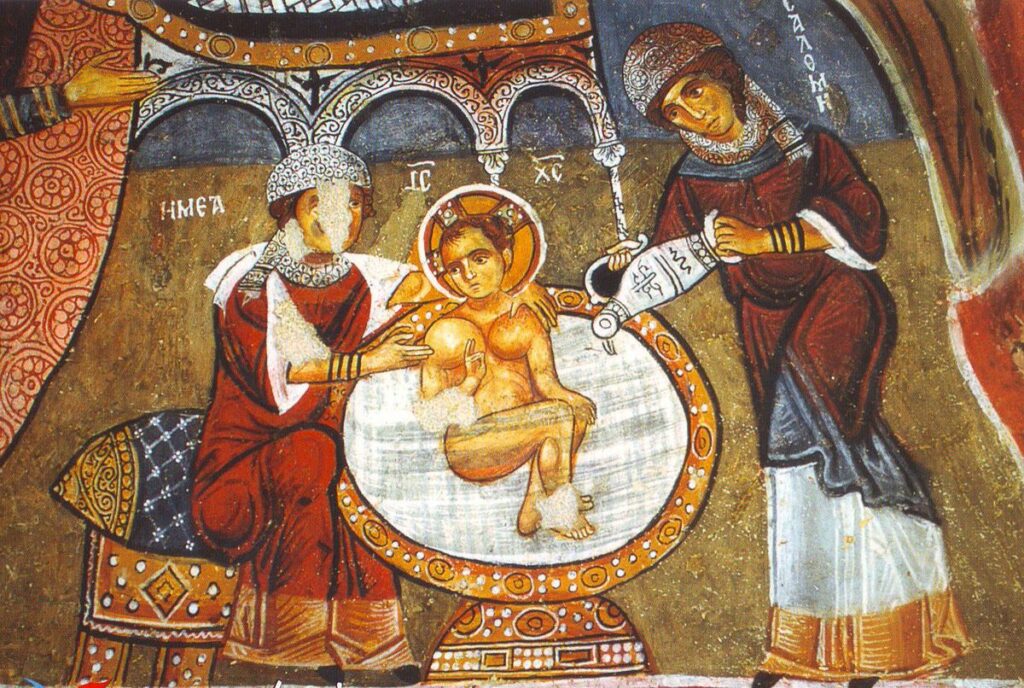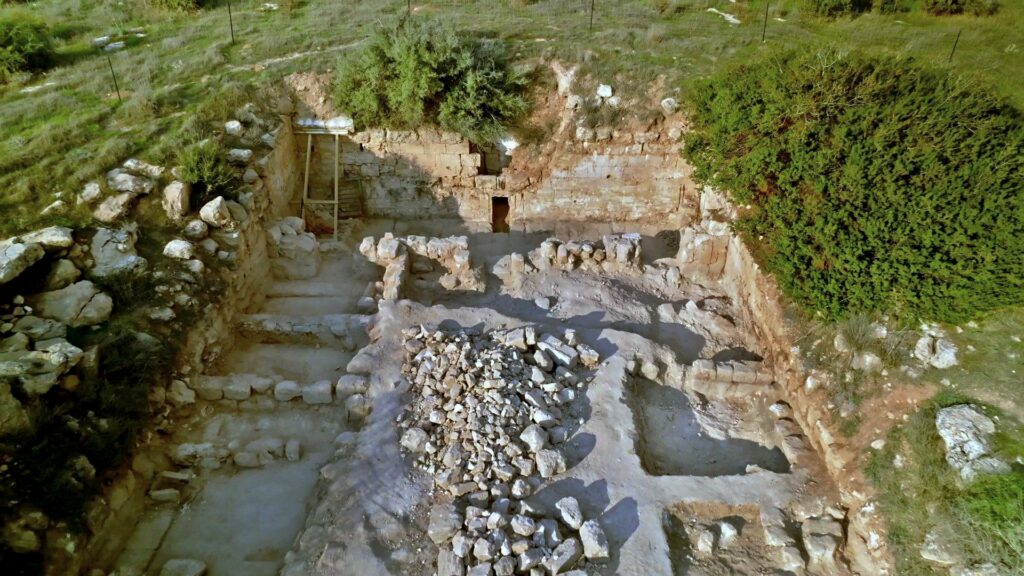Archaeological excavations in Israel have uncovered a 2000-year-old Jewish family tomb which later was transformed to a Christian chapel in memory of Salome, the mid-wife of Virgin Mary according to a Christian tradition in the region.
Located at the crossroads of migrations and conquests, Israel is full of ancient monuments and archaeological sites that testify to its multicultural past. Jews, Christians, Muslims, Greeks and Romans were living next to each-other, sometimes peacefully, and influenced each-other’s cultures and religions.
An example of this is Salomo Cave located on the slope of a hill in the Lachish Forest in southern-central Israel. The cave has been known by archaeologists for decades but is only now being fully excavated by Israel Antiquities Authority (IAA) as part of the Judean Kings’ Trail Project. Originally a burial cave from the period of the second temple, it continued to be used in Byzantine and Early Islamic periods.
The burial cave was first exposed by antiquity looters about 40 years ago before the excavations started. They broke into the cave and stole whatever valuable objects they could find there.
“The cave was used for burial during the first century AD and maybe as early as the first century BC,” Nir Shimshon-Paran, excavation director at IAA, told The Brussels Times. “Since the cave was robbed before the first excavation in the early 80s, the family name was not found.”
Some of the stones in the cave are carved with decorative vegetal designs, including rosettes, pomegranates and acanthus vases, characteristic Jewish features. The forecourt and the cave itself attest that the tomb belonged to a wealthy family which invested much effort into preparing the cave.

The Second Temple-period burial cave, credit: IAA/Emil Aladjem
The cave is comprised of several chambers with multiple rock-hewn burial niches and broken ossuaries (stone boxes), attesting to the Jewish burial custom at the time. The custom of secondary burial in stone coffins is well-known from Bet Shearim, a vast necropolis in Galilee of rock-cut tombs with sarcophaguses dating to the first centuries AD.
What surprised the archaeologists was the adaptation of the cave into a Christian chapel judging by the crosses and the dozens of inscriptions in Greek, Arabic and Syrian engraved on the cave walls in the Byzantine and Early Islamic periods. The name Salome appears in the inscriptions which indicates that the chapel was dedicated to her.
Who was Salome?

Greek dedication inscription to Salome in lapidary style: ‘Holy Salome, have mercy on Sakarja ben Kyrilos, Amen, credit: IAA/Emil Aladjem
The name Salome (in Hebrew: Shalom or Shlomit) was a common Jewish name in the Second Temple-period and was also known in the Hasmonean and Herodian royal families. There are references to Salome the myrrh-bearer in the New Testament where she is described as a disciple of Jesus and related to Virgin Mary and the first apostles. This Salome was included among the saints in 6th century.,
A more likely interpretation is that the name in the cave refers to a tradition recorded in the apocryphal gospel of James from the third century in Egypt. The gospel mentions a midwife called Salome from Bethlehem who was called to assist in the birth of Jesus. She arrived too late and did not believe that she had been asked to deliver a virgin’s baby.
When she stretched out her hand to examine Virgin Mary, her hand became dry and was only healed when she held the baby’s cradle. From the gospel the veneration of Salome spread among the Eastern churches and further to the West via pilgrims to the holy places. It became also a motive in Orthodox iconography.

Orthodox icon of Salome the mid-wife bathing the child Jesus in a fresco in Cappadocia, credit: Wikimedia Commons
The choice of a former Jewish burial grave in the Judean lowlands as the site of a Christian chapel is no coincidence. According to a tradition, Salome accompanied the holy family when it passed the cave during their flight to Egypt. She was thought of having been buried in the cave which gave rise to a local cult and worship.
“It’s a known fact that during the Byzantine era efforts were made to identify holy places for the pilgrims to visit,” Nir Shimshon-Paran explains. “The walls of Salome Cave are covered by crosses and there is a chapel in it. There is no doubt that the cave became a Christian pilgrimage site.”
The excavation of the courtyard in front of the cave uncovered a row of shop stalls. In the shops, hundreds of complete and broken clay lamps dating from the 8th–9th centuries AD were found. “The lamps may have served to light up the cave, or been part of religious ceremonies, similarly to candles distributed today at the graves of saints and in churches.”
When will Salomo Cave be open for visitors? “We are now at the last stages of the excavation and I do believe that within a year or two it will be open to the public,” he replied.
Salome’s Cave is one of many sites in the Lachish Forest and along the Judean Kings’ Trail. The most famous site is no doubt the ruins of the Biblical city Lachish, which though strongly fortified was captured by the Assyrians after a siege in 701 BC. The siege and the captivity of the surviving inhabitants have been documented in reliefs that once decorated king Sanherib’s palace in Niniveh.
M. Apelblat
The Brussels Times

